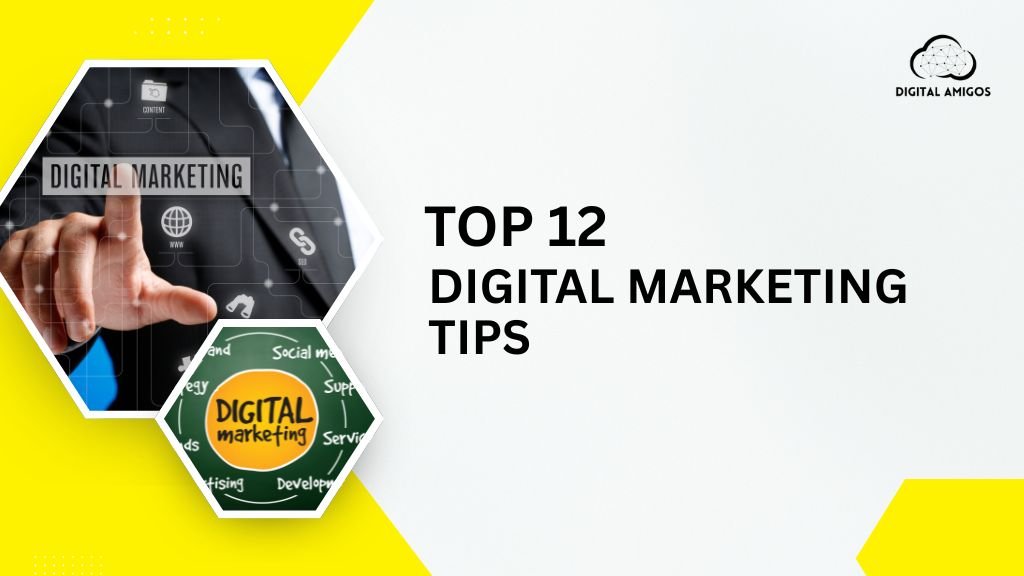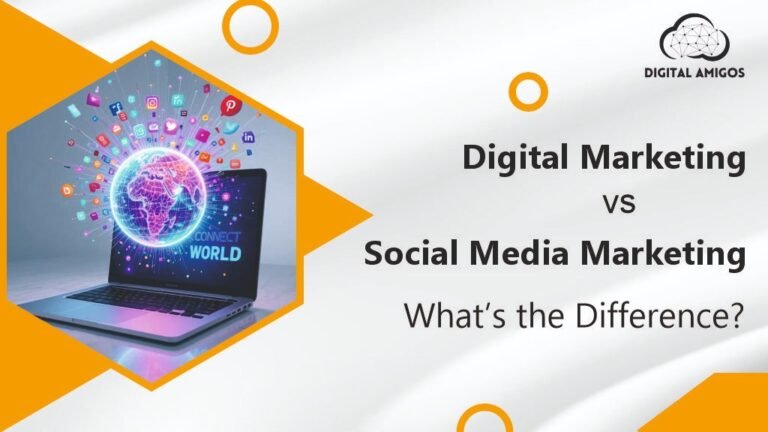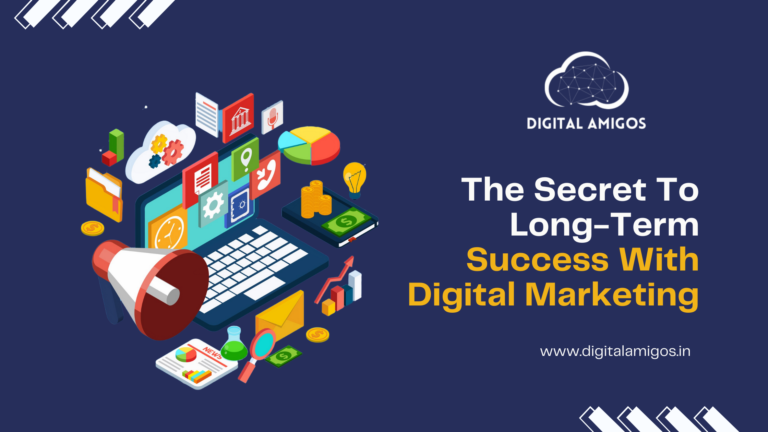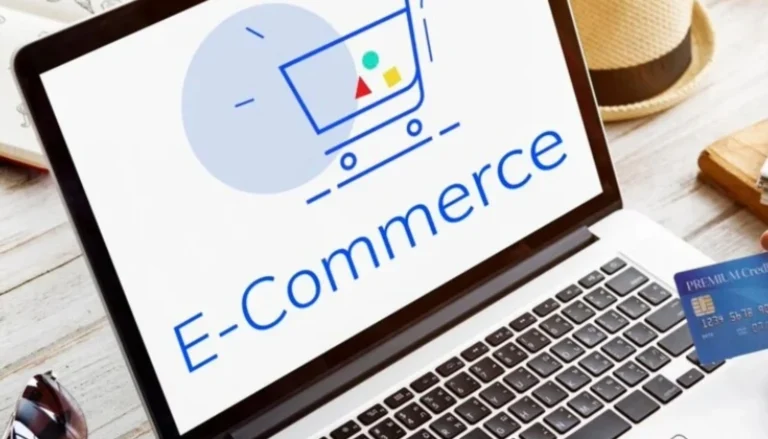Top 12 Digital Marketing Tips: Strategies That Actually Work
In today’s fast-moving world, having a strong digital presence is not just a choice — it’s a necessity. Whether you run a business, sell products online, offer services, or are building your personal brand, digital marketing is the key to reaching your audience.
But where do you begin? And how do you know what really works?
This blog shares 12 practical and result-driven digital marketing tips that you can start using right away. Whether you’re just starting out or looking to sharpen your strategy, these tips will help you grow your visibility, generate leads, and connect with your audience more meaningfully.
1. Understand Your Audience
One of the biggest reasons digital marketing campaigns fail is because they are aimed at the wrong people or are too broad. Instead of trying to reach everyone, focus on reaching the right people.
Start by creating a buyer persona — a detailed profile of your ideal customer. This should include age, gender, profession, location, interests, problems they face, and what motivates them to buy. When you understand their needs and behavior, your content and campaigns become far more effective.
Conduct surveys, talk to existing customers, and use insights from Google Analytics or social media tools to refine your audience profile.
2. Set Clear and Measurable Goals
Before starting any campaign, define what success looks like. Setting goals gives you direction and allows you to track your performance.
Use the SMART goal framework — Specific, Measurable, Achievable, Relevant, and Time-bound.
For example:
- Increase website traffic by 30% in 3 months
- Generate 50 new leads per month through landing pages
- Grow Instagram followers by 1000 in 60 days
Once your goal is clear, align your strategy with it. For example, if your goal is lead generation, focus on landing pages, lead magnets, and email marketing.
3. Create High-Quality, Valuable Content
Content is not just king — it’s the foundation of every digital strategy.
Good content attracts visitors, keeps them engaged, answers their questions, and helps convert them into customers. Whether it’s blog posts, social media content, videos, guides, or email newsletters, your content should provide value.
Focus on topics your audience is searching for. Use a mix of formats: how-to guides, comparisons, listicles, case studies, and educational videos.
Also, optimize your content for readability:
- Use short paragraphs
- Add subheadings
- Write in simple language
- Use bullet points to break down complex topics
Consistency is key. Posting once a week with value-packed content is better than daily low-effort updates.
📌 Example:
If you’re a dentist, don’t just post “Book an appointment.” Write blogs like “How to Prevent Cavities at Home” or “5 Signs You Need a Root Canal.”
4. Apply Basic SEO Principles
Search Engine Optimization helps your content rank higher on Google so that more people can discover your business organically.
You don’t need to be an expert to apply the basics:
- Do keyword research using tools like SEMRush or Google Keyword Planner
- Use keywords naturally in your headings and body content
- Write SEO-friendly titles and meta descriptions
- Add internal links between related blog posts and pages
- Use clean, readable URLs
- Add ALT text to your images
Focus on search intent. Understand why someone is searching and what kind of content they expect. This improves both rankings and engagement.
Also, make sure your website loads quickly, works well on mobile, and has a clean layout. Google prefers sites that offer a good user experience.
5. Choose the Right Social Media Platforms
Social media is not just for likes and shares — it’s a powerful channel to connect with your audience and build trust.
But don’t try to be everywhere. Focus on 2-3 platforms where your audience is active.
Popular platforms:
- Instagram: Best for visual content — ideal for fashion, food, travel, and lifestyle businesses.
- LinkedIn: Best for professionals, B2B services, and networking.
- YouTube: Powerful for education, reviews, and storytelling.
- Facebook: Still great for local businesses and communities.
Plan your content calendar ahead of time. Use a mix of visuals, stories, educational posts, and user-generated content. Engage with followers by replying to comments and messages. Building a real connection goes a long way in digital marketing.
6. Use Email Marketing to Nurture Leads
Email marketing is still one of the most powerful ways to convert leads into customers. It allows you to speak directly to your audience without depending on social media algorithms.
How to start:
- Build your email list through forms and lead magnets (like free guides or discounts)
- Segment your audience based on interests or behaviors
- Send helpful, value-based content (not just promotions)
For example, if someone signs up for a newsletter from a travel company, send them tips about destinations, travel safety, and packing checklists before promoting your packages.
Use tools like Mailchimp, Brevo (formerly Sendinblue), or ConvertKit to automate your emails and track results.
7. Try Paid Advertising Strategically
While organic reach is important, paid ads can bring faster results when used smartly.
Start small. Platforms like Facebook Ads and Google Ads allow you to run targeted campaigns with a small budget. Focus on one goal — such as lead generation, website visits, or product sales.
Make sure to:
- Define your audience clearly
- Create a compelling ad copy
- Use high-quality visuals or videos
- Direct users to a specific landing page (not the homepage)
Always test multiple ad creatives and monitor your performance regularly. This will help you improve your ad ROI over time.
8. Leverage the Power of Video Marketing
Video has become one of the most consumed types of content online.
Whether it’s a 15-second reel or a 5-minute tutorial, video content builds trust and increases engagement.
Ideas for videos:
- Explainer videos
- Product demos
- Client testimonials
- Educational tips
- Behind-the-scenes content
You don’t need a professional setup to get started. A smartphone, a clear script, and good lighting are often enough.
Post your videos on YouTube, Instagram, Facebook, and even WhatsApp Status to increase visibility and engagement.
9. Focus on Local SEO for Location-Based Businesses
If your business serves a local area, local SEO is essential to show up in local searches like “best bakeries near me” or “plumber in Jaipur”.
To improve your local presence:
- Create a Google Business Profile (formerly Google My Business)
- Add accurate business information (address, working hours, services, etc.)
- Post updates and offers regularly on your profile
- Collect and respond to customer reviews
- Use local keywords in your website content
Local SEO helps you show up on Google Maps and “near me” searches, which are often high-converting.
10. Track Your Performance with Analytics
You can’t improve what you don’t measure.
Tracking your digital marketing performance helps you understand what’s working, what’s not, and where to improve.
Use tools like:
- Google Analytics for website traffic and behavior
- Google Search Console for SEO performance
- Meta Business Suite for Facebook and Instagram stats
Track key metrics such as:
- Website visits
- Time spent on page
- Conversion rates
- Social media reach and engagement
- Ad performance (cost per click, cost per lead)
Analyze these numbers regularly. Make data-driven decisions and improve your marketing strategies over time.
11. Use Digital Tools to Stay Productive
Managing multiple platforms, campaigns, and content can be overwhelming. Luckily, there are tools that make your life easier.
Some helpful tools:
- Canva for creating social media designs and presentations
- Buffer or Meta Business Suite for scheduling social media posts
- Mailchimp / Brevo for easy email marketing
- Trello or ClickUp for planning content calendars
- Ubersuggest or Ahrefs for keyword research
- Grammarly for checking grammar and readability
These tools save time and allow you to focus more on strategy and creativity rather than repetitive tasks.
12. Stay Updated and Keep Learning
Digital marketing is not a one-time effort. It is an ongoing process that evolves constantly.
Google updates its algorithms frequently. New features are added to social media platforms. Consumer behavior keeps changing.
That’s why you need to make continuous learning a part of your routine.
Read trusted blogs, attend webinars, follow digital marketing experts, and test new strategies. Keep experimenting to find out what works best for your brand and your audience.
Conclusion
Digital marketing is not just about promoting your business — it’s about building relationships, solving problems, and delivering value consistently.
You don’t need to master every tool or trend overnight. Start small, stay consistent, and focus on creating value for your audience. Whether it’s through helpful blogs, engaging social media posts, targeted emails, or simple videos — every small effort counts.
The tips shared in this blog are proven to work across different industries and business sizes. Implement them step by step, and over time, you’ll notice better reach, more engagement, and higher conversions.
In the end, successful digital marketing is not about doing more — it’s about doing the right things, the right way.








